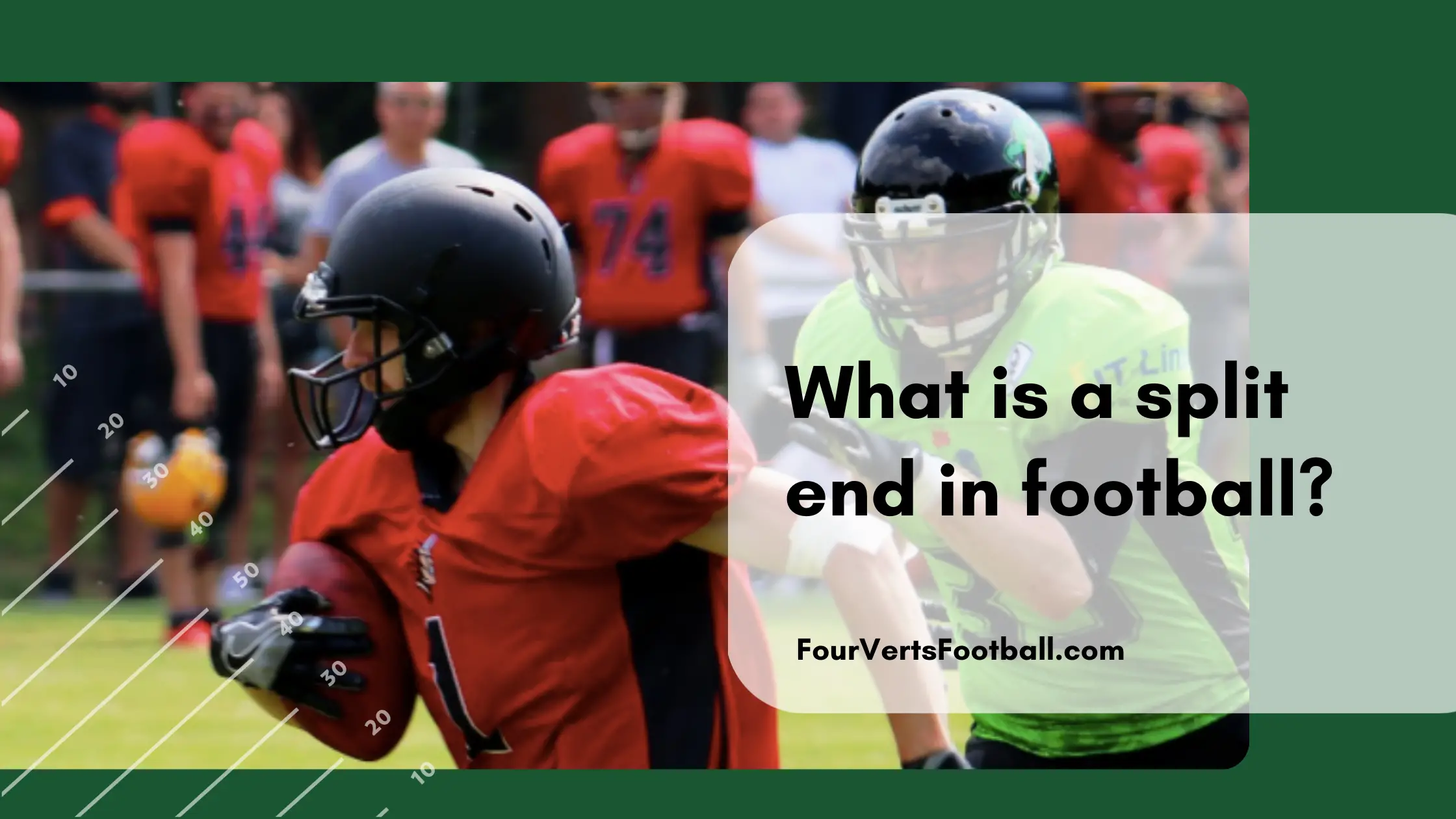A split end in football is a wide receiver who lines up on the line of scrimmage far away from the formation and close to the sideline.
A split end is the last player on the line of scrimmage on his side of the field which makes him an eligible receiver.
The term split end is very similar to wide receiver the main difference being that a split end must line up on the line of scrimmage. All split ends are wide receivers but not all wide receivers are split ends.
Wide receivers can line up in other locations on the field and when they do so they are not considered split ends.
The term split end was primarily used in the older days of football. Previously teams would put all their players around the formation, it wasn’t until the inclusion of the forward pass that teams began to start moving players out wide.
Once the players were moved out wide they begin to use terms such as split end and flanker.
Split End Vs Flanker
The difference between splits ends in flankers can be helpful in understanding what these terms mean.
Split end and flanker are both terms that are used to describe wide receivers in football.
Flankers are going to line up out wide but the difference is these players will be off the line of scrimmage. While split ends will be lined up on the opposite side of the field but will be on the line of scrimmage.
In the game of football lining up on the line of scrimmage can make you an ineligible receiver. Of all the players that line up on the line of scrimmage only the players on either end of the line are considered eligible.
For this reason, the flanker is going to line up on the strong side of the formation. The strong side of the formation is going to feature the tight end on the line of scrimmage.
If the flanker were to line up on the line of scrimmage he would become the player on the end of the line and would therefore make the tight end ineligible.
This is why you will find the flanker is on the strong side and the split end is on the weakside.
Additionally, the terms flanker and split end can be used interchangeably with the terms X receiver and Z receiver.
The term flanker was originally used because this player was placed on the backside of the formation. When the forward pass first came about teams would use one receiver split from the formation.
When teams started to use a second receiver they placed him on the other side of the field so that they could “flank” the defense.
Are there other receiving positions?
The only other receiver position aside from split end and flanker is the slot receiver position. Slot receiver line up in between the offensive line and the wideout.
These players tend to be smaller and are able to generate separation through agility and quick bursts of speed.
Slot receivers have seen an increased amount of usage as the NFL has continued to become more and more of a passing league.
These receivers are not the top option for the offense but can be crucial on third downs and short-yardage situations.

